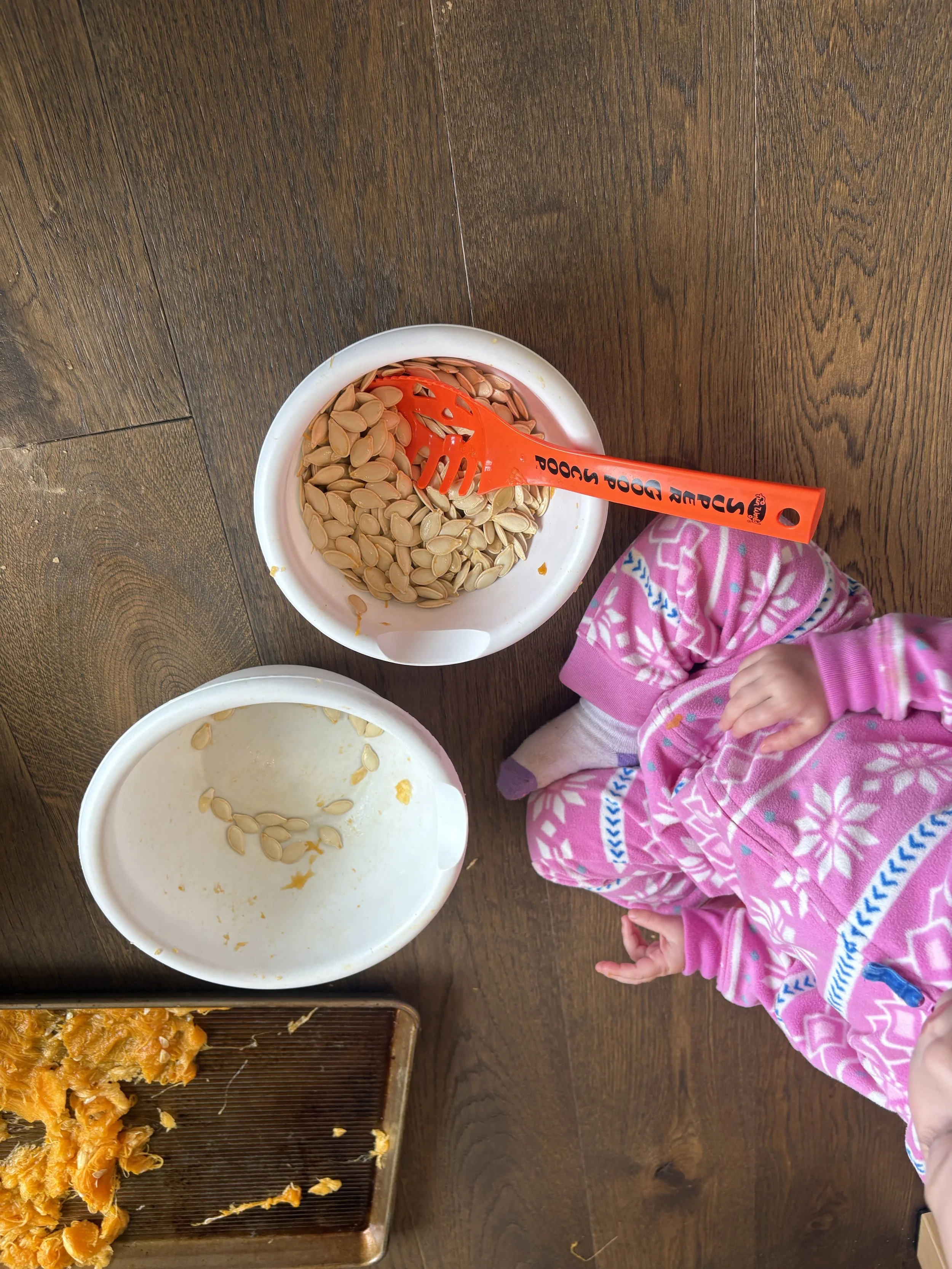🍂 Fall Sensory Play Ideas for Toddlers: Embracing the Crunch, Squish, and Squirm
Fall is one of the best seasons for sensory exploration! The smells, textures, and sounds of autumn naturally engage toddlers’ developing sensory systems. However, not every child jumps into the fun right away. Some little ones may feel hesitant about getting messy, walking on uneven leaves, or touching sticky pumpkin guts — and that’s okay. As caregivers and therapists, our goal is to meet them where they are, support regulation, and help them learn that new sensations can be safe and enjoyable.
Play in the Leaves
There’s nothing quite like the crunch of dry leaves underfoot!
Simple Start: Begin with walking next to the leaf pile or using a rake together to fill a bin. This builds confidence before full-body play.
Add Tools: Toddlers who are unsure about touching the leaves directly may prefer using small rakes, buckets, or toy dump trucks to move leaves around.
Next Level: When ready, jump in together, throw them up, or bury feet and hands to explore textures and sounds.
Therapist Tip: For children with tactile sensitivities, try layering clothes (long sleeves or light gloves) so they can still participate without feeling overwhelmed. Let them choose when to remove a layer.
Pumpkin Sensory Play
Pumpkin carving season offers a perfect chance to explore new smells and textures.
Gutting a Pumpkin: Start by knocking on the pumpkin’s outside (auditory input) and scraping the shell (proprioceptive input).
Scooping Together: Invite your toddler to use a spoon first before using their hands. Keep a towel nearby and allow frequent hand-wiping breaks.
Extend the Play: Sort seeds into a bowl, rinse them, and roast them together to engage smell, taste, and cause-and-effect learning.
Therapist Tip: Children who are hesitant about sticky textures may enjoy transferring pumpkin seeds with tongs or a spoon before progressing to finger exploration.
Other Fall Sensory Ideas
Apple Wash Station: Fill a bin with warm soapy water and let toddlers wash, dry, and shine apples.
Corn Kernel Bin: Use dried corn, small scoops, and hidden objects for a rich tactile experience.
Outdoor Nature Hunt: Collect acorns, sticks, and pinecones, then glue them to paper or sort them by size or color.
When Your Toddler is Apprehensive
It’s completely normal for some toddlers to approach sensory play with caution. Here’s how to support them:
Model Calm Exploration: Let them see you touch the leaves or pumpkin guts with curiosity — they’ll take cues from your comfort.
Offer Choice and Control: Instead of forcing participation, invite — “Do you want to touch with your hand or the spoon?”
Respect “No” but Keep the Door Open: Even observing is valuable. With time and gentle exposure, most children grow more willing to try.
Pair Sensory with Structure: Singing songs (“Five Little Pumpkins”), using visual timers, or offering predictable routines can make messy play feel safer.
Takeaway for Parents
Sensory play doesn’t have to be perfect or Pinterest-worthy — it’s about shared moments, gentle exposure, and joy in discovery. Let your child lead, celebrate curiosity, and remember: every leaf crunch and pumpkin squish builds the foundation for future learning, coordination, and regulation.

